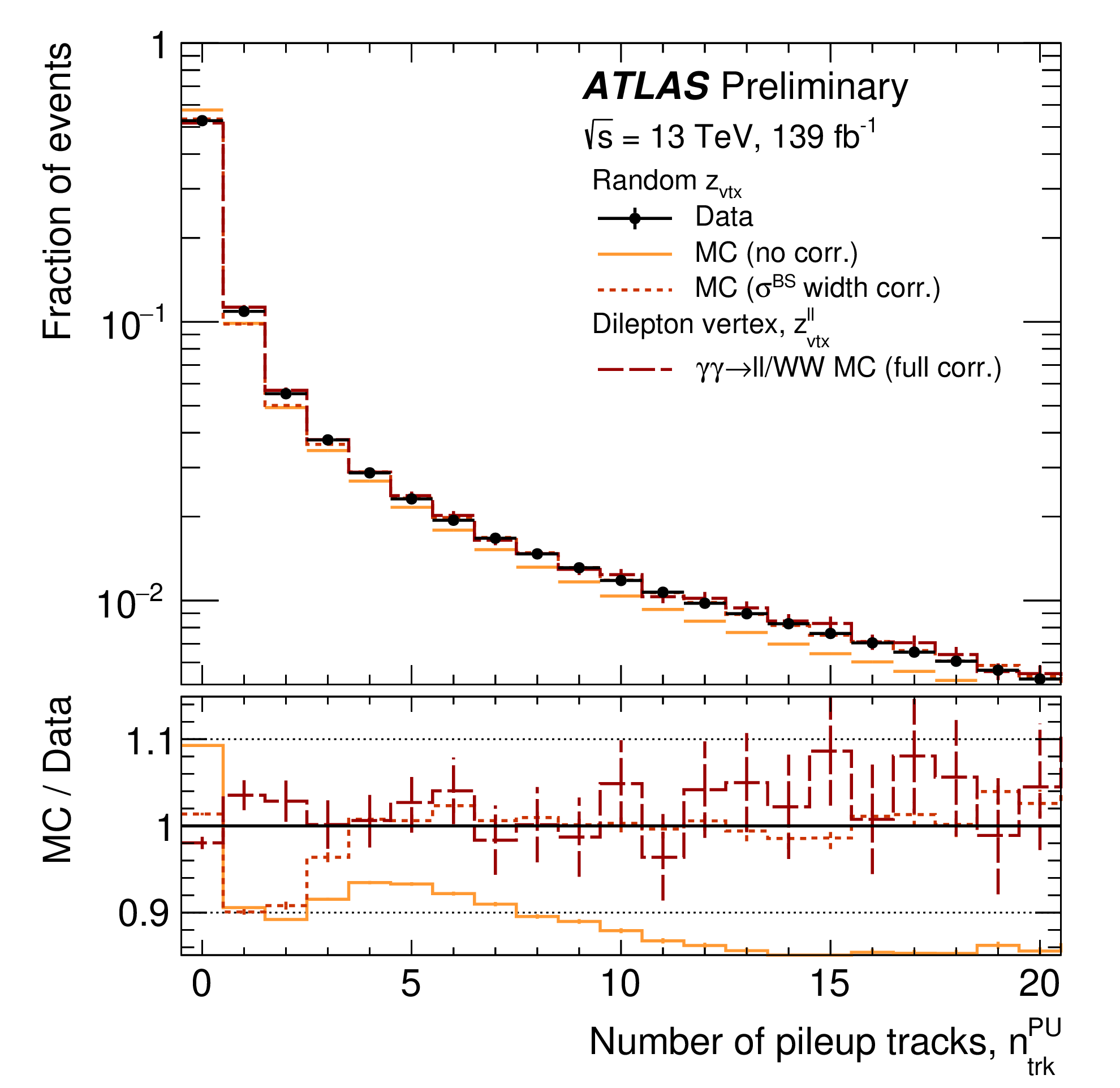W bosons, elementary particles that carry the weak force, one of the four fundamental forces. have been observed in pairs from photon collisions in the ATLAS experiment of the LHC.
It confirms one of the main predictions of electroweak theory, that force carriers can interact with themselves, and, since the LHC has been used a high-energy photon collider directly probing electroweak interactions, provides new ways to probe it.
According to the laws of classical electrodynamics, two intersecting light beams would not deflect, absorb or disrupt one another. However, effects of quantum electrodynamics (QED), the theory that explains how light and matter interact, allow interactions among photons.
The new result reported at this conference is sensitive to another rare phenomenon in which two photons interact to produce two W bosons of opposite electric charge via (among others) the interaction of four force carriers. The four force-carrier interaction is one of the predictions of the electroweak theory that explains how force-carrier particles, also known as gauge bosons, interact not only with matter particles, but also with one another. Quasi-real photons from the proton beams scatter off one another to produce a pair of W bosons. A first study of this phenomenon was previously reported by ATLAS and CMS in 2016, from data recorded during LHC Run 1, but a larger dataset was required to unambiguously observe it.

Normalised distribution of tracks from additional pp interactions, nPUtrk, associated with the interaction vertex, in data and signal simulated with a beam spot width of σBSMC=42 mm. For data, nPUtrk is determined using a random z-position along the beam axis away from the interaction vertex. The same quantity is shown for simulated γγ→WW events before and after correcting the beam spot width to the one observed in data. The inverse ratio of the beam spot corrected simulation and data corresponds to the correction applied to nPUtrk in the simulation using the GEANT4-based classification. To demonstrate the closure of the correction, the number of tracks reconstructed in elastic γγ→WW signal MC samples is shown after applying all corrections.
Owing to the nature of the interaction process, the only particle tracks visible in the central detector are the decay products of the two W bosons, an electron and a muon with opposite electric charge. W-boson pairs can also be directly produced from interactions between quarks and gluons in the colliding protons considerably more often than from photon–photon interactions, but these are accompanied by additional tracks from strong interaction processes.
Physicists had to disentangle collision tracks to observe this rare phenomenon but the observation has a highly significant statistical evidence of 8.4 standard deviations, meaning the chance of it being a statistical fluctuation is less than 99.9999 percent. ATLAS physicists used a considerably larger dataset taken during Run 2, the four-year data collection in the LHC that ended in 2018, and developed a customised analysis method.